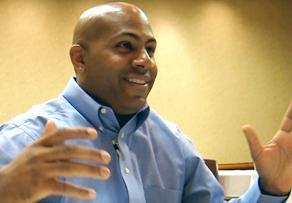
It is well-established that positive emotional responses to a product's design are critical to that product's market acceptance and success. But how do you measure these emotional responses, and how do they translate into product improvements?
Our client, Philips, had worked with our Carnegie Mellon colleagues to establish a set of criteria for understanding the emotional impact that wearable home healthcare devices have on the healthcare professionals who recommend and fit these devices to their patients. Philips asked us to test these criteria with actual subjects to establish the validity of the approach and to weigh the importance of the various criteria within it. To accomplish this, we conducted 'emotion impression trials' with attendees of a large medical trade show. Our sessions were designed to determine the emotional impact of our client's device as compared to their competitors' -- mimicking the first encounter that a home healthcare professional might have with these devices. We first showed participants a device - our client's or the competitors' - and then allowed them to pick up and handle the device, and even try it on. During this time we also interviewed each participant, eliciting their thoughts and impressions. They were encouraged to discuss the emotions that were evoked overall, as well as emotions evoked by individual design features, like colors and materials. We concluded each interview by presenting the criteria that our client had developed, which was in the form of a modified semantic-differential questionnaire designed to evoke the emotions and attitudes that each home health care professional had towards each manufacturer's device. In addition to the analysis of the semantic differential scale, we provided Philips with a detailed video summary of the emotional impact of their device as compared to competitor devices in the form of a highlights reel of participants' comments and reactions. We also provided a report emphasizing the features of each device that contributed most to the emotional impact of those devices. Philips was able to use the results from criteria they had developed to determine how emotions were influencing customers' acceptance of their devices compared to competitors' and was able to use the additional information from the interviews to determine the features and attributes that were most impacting those emotional reactions.